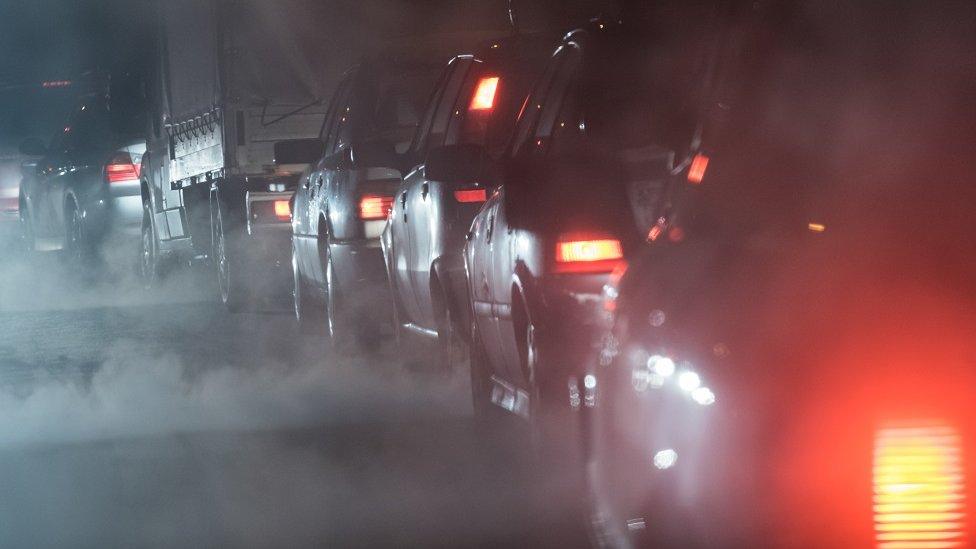Campaigners reveal Scotland's most polluted streets
- Published
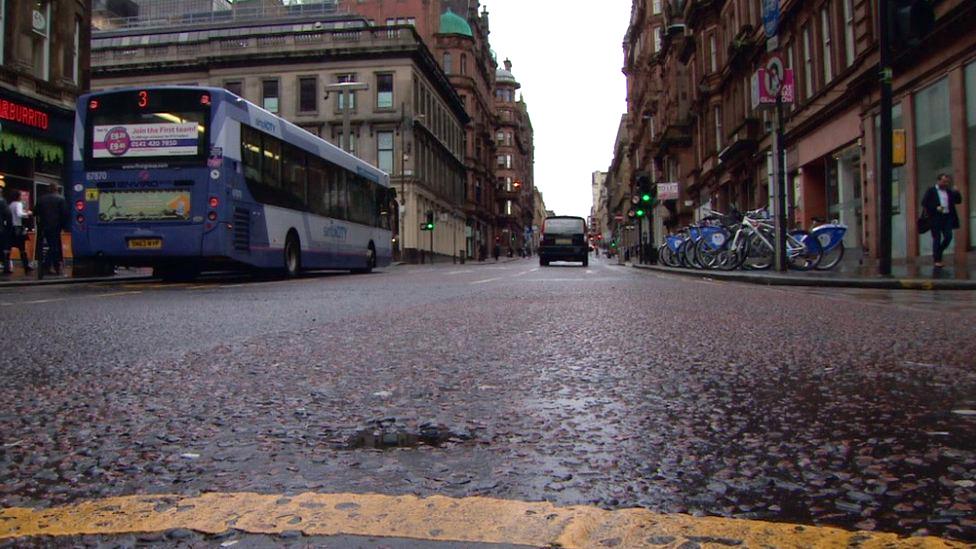
Hope Street in Glasgow is the most polluted street in Scotland
Campaigners have described Scotland's air quality as "shameful" despite an improvement in the country's most polluted street.
Friends of the Earth Scotland said many areas suffered from higher pollution levels in 2019 than in previous years.
But nitrogen dioxide (NO2) levels on Hope Street in Glasgow averaged 55.6 micrograms per cubic metre (mcg/m3) last year compared with 60 in 2018.
The Scottish government said it is working to address the problem.
FoE Scotland said politicians at a local and national level had been too slow in reducing car traffic in urban areas and in making public transport both reliable and affordable.
The environmental campaign group analysed official air pollution data for 2019, looking at two toxic pollutants which are primarily produced by transport.
NO2 and particulate matter (PM10) are both caused by fossil-fuel engines.

Most polluted streets for nitrogen dioxide in 2019
Glasgow Kerbside (Hope Street) - 55.63
Edinburgh Nicolson Street - 48.81
Dundee Seagate - 43.90
Inverness Academy Street - 43.32
Dundee Lochee Road - 42.50
Edinburgh St John's Road -41.93
Figures in mcg/m3. The European Ambient Air Quality Directive set a limit for NO2 of 40 mcg/m3. The deadline for compliance was 1 January 2010.

FoE Scotland said the provisional data also indicates Salamander Street in Edinburgh has breached the legal limit for PM10, recording a figure of 19.44 mcg/m3.
The Scottish annual statutory standard for PM10 is 18 mcg/m3. The deadline for this standard to have been met was 31 December 2010.
The information indicated legal air safety standards, which should have been met a decade ago, are being breached at seven areas across Scotland.
In Inverness the data shows increases on 2018 levels of pollution and the Highland capital has now breached the legal limit for NO2.
Significant increases in pollution were also recorded in Falkirk, Perth, Bearsden, Broughty Ferry and Byres Road, in Glasgow's west end.
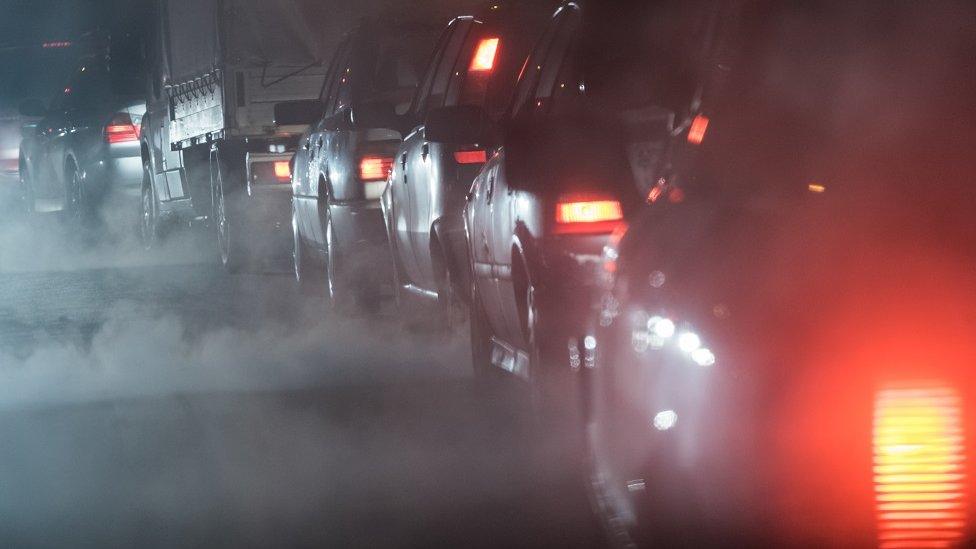
Gavin Thomson, FoE Scotland's air pollution campaigner, said: "These figures are shameful. They show air pollution is failing to improve across Scotland, which means millions of us are at risk of serious health conditions, like asthma, heart attacks, and strokes.
"In many areas, pollution problems appear to be getting worse. This is dangerous for our health, and is a failure of government to protect its most vulnerable citizens."
Mr Thomson said the COP26 UN climate negotiations, which will be held in Glasgow in November, should act as a wake-up call.
He added: "Our transport system is unsustainable. It is harming our lungs, and causing climate change.
"Transport is the largest source of climate emissions in Scotland, with levels remaining pretty much the same for the last 30 years."
FoE said the billions traditionally earmarked for new road projects should instead be invested in public transport, walking and cycling.
'Stringent targets'
A Scottish government spokesman said: "We are working hard to improve air quality across Scotland and we have seen significant reductions in pollution emissions in recent decades through tighter industrial regulation, improved fuel quality, cleaner vehicles and an increased focus on sustainable transport.
"Scotland enjoys a high level of air quality compared to the rest of the UK and other parts of Europe and we have set more stringent air quality targets."
The spokesman said Low Emission Zones will help further improve air quality in towns and cities by preventing access to the most polluting vehicles.
He also said practical and financial support, including £4.5m in annual funding, is being provided to local authorities to address local air pollution hotspots.
- Published27 January 2019
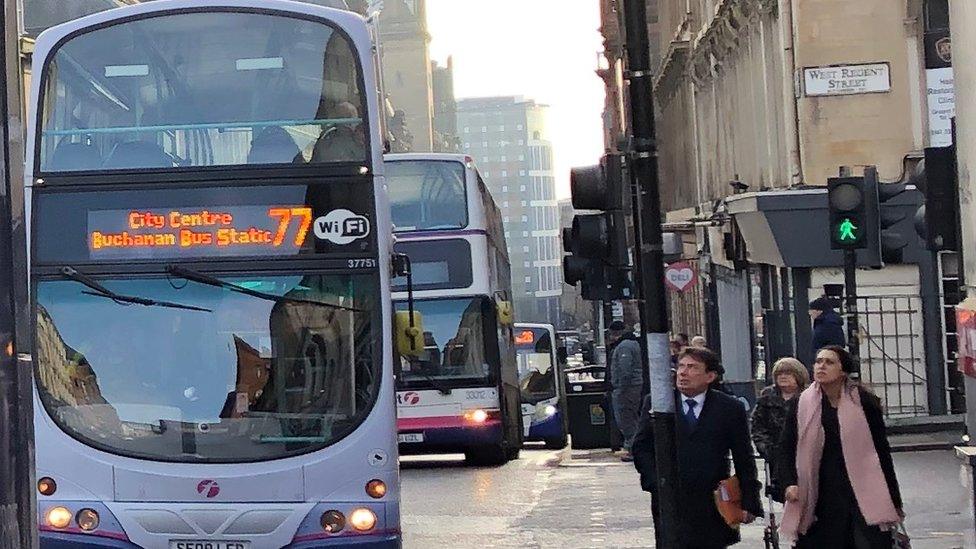
- Published31 December 2018
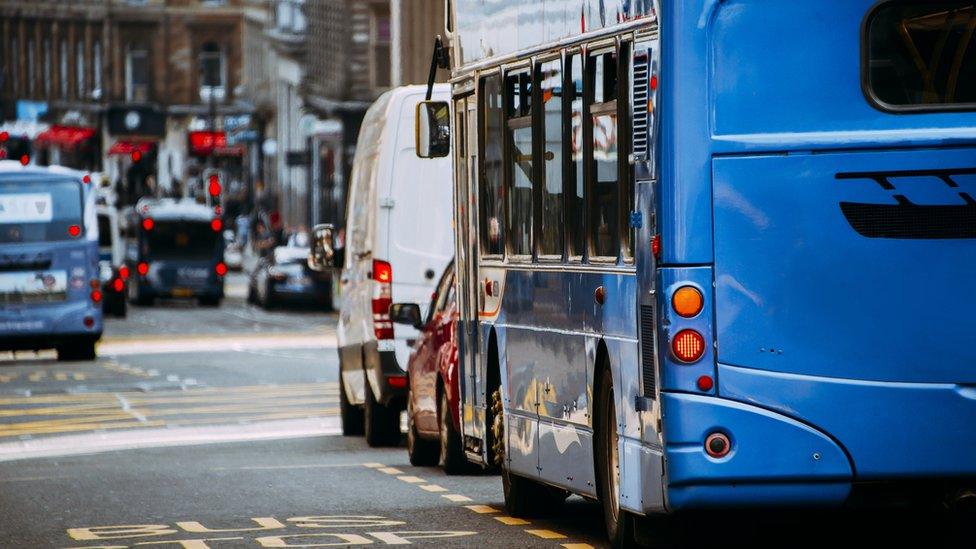
- Published21 January 2018
